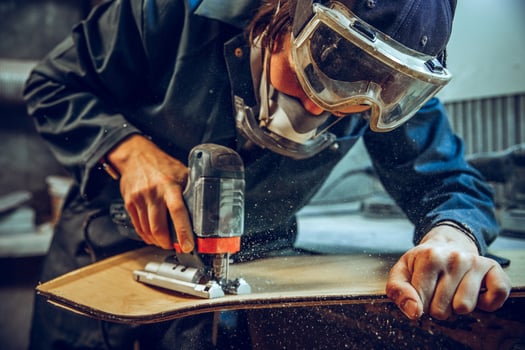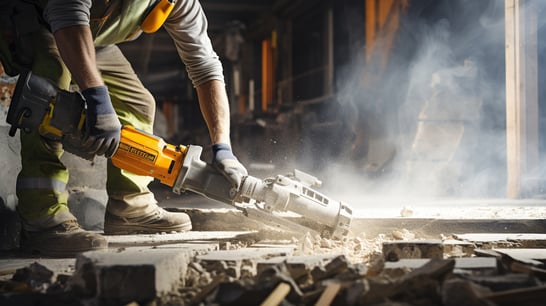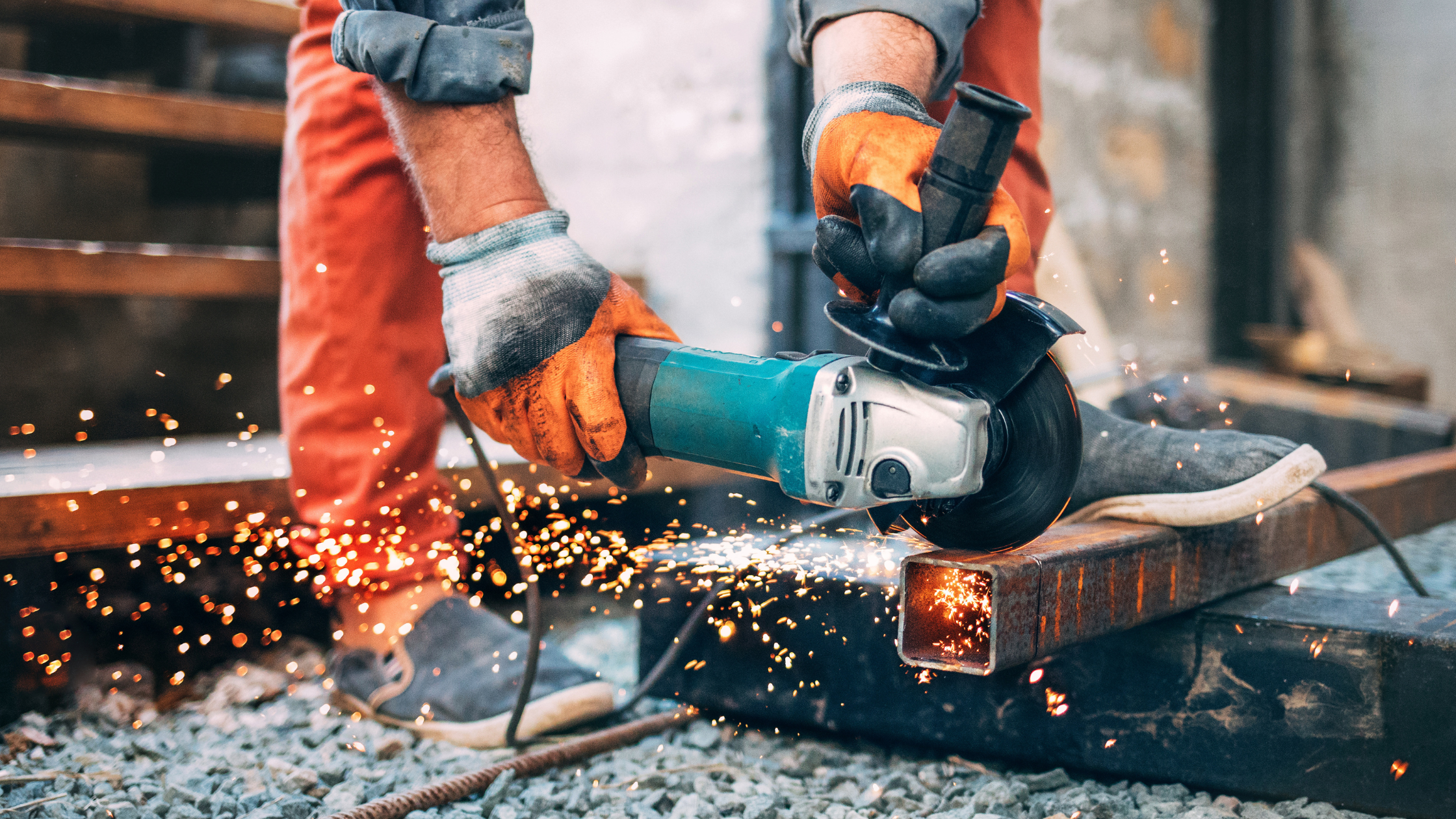In the world of construction, manufacturing, and woodworking, power tools are essential for a wide range of projects. From framing houses to crafting furniture, these tools empower professionals to shape and build with remarkable efficiency. However, the very power that makes them efficient also necessitates a strong focus on safety. Improper use of power tools can lead to serious injuries, including cuts, fractures, and even amputations. This article explores the importance of safe power tool usage and equips workers with strategies to minimize risks and prioritize safety on the job.
The Dangers of Mishandling Power Tools

The potential consequences of using power tools incorrectly can be severe. Here’s a deeper dive into some common hazards to be aware of:
- Kickback: This occurs when the tool snags or binds on the material being cut, forcefully twisting the tool back towards the user. Kickback can be particularly dangerous with powerful tools like saws, routers, and angle grinders. It can cause serious injuries to the user’s hands, arms, and even chest if they are not prepared for the sudden force.
- Loss of Control: Powerful tools can be difficult to control, especially if they malfunction or the user loses their grip. This can lead to the tool slipping and causing cuts, or the user losing balance and falling, potentially resulting in further injuries. Factors that can contribute to loss of control include:
- Improper grip: Not using a firm two-handed grip on the tool can make it more susceptible to slipping.
- Dull blades or bits: Dull blades or bits require more force to operate, increasing the risk of the tool slipping or kicking back.
- Fatigue: Using power tools for extended periods can lead to fatigue, which can impair coordination and grip strength, increasing the risk of losing control of the tool.
- Flying Debris: Power tools can generate a significant amount of dust, chips, and other debris during operation. This debris can be a serious eye hazard if proper protection isn’t worn. Particles can fly at high speeds and lodge themselves in the eye, potentially causing scratches, punctures, or even blindness.
- Electrical Hazards: Using power tools comes with inherent electrical risks. Here are some specific dangers to be aware of:
- Damaged cords: Damaged or frayed cords can cause electrical shock or create a fire hazard.
- Improper grounding: If a tool is not properly grounded, it can become energized and cause a shock if the user comes into contact with a live wire or a faulty component.
- Working in wet conditions: Water conducts electricity, so using power tools in wet environments significantly increases the risk of electrical shock.
- Noise-Induced Hearing Loss: Prolonged exposure to loud noise from power tools can cause permanent hearing damage. This is a gradual process that often goes unnoticed until significant hearing loss has already occurred.
By understanding these potential dangers and taking appropriate safety precautions, we can significantly reduce the risk of injuries when using power tools.
Knowledge Breeds Safety: Training and Education are Paramount
Equipping workers with the knowledge and skills for safe power tool operation is the cornerstone of an effective safety program. Here’s a deeper dive into what proper training should encompass to ensure workers are empowered to use power tools safely and efficiently:
- Tool-Specific Instruction: Employees should receive training tailored to the specific types of power tools they will be using. This goes beyond just the basic functionality of the tool. Here are some key areas a well-designed training program should cover:
- Applications: Understanding the intended applications of each tool helps ensure it’s being used for the right task. Using the wrong tool for the job can increase the risk of accidents.
- Capabilities and Limitations: Trainees should understand the capabilities of each tool, including its cutting capacity, material suitability, and any safety limitations.
- Safe Startup, Operation, and Shutdown Procedures: Proper procedures for starting up, operating, and shutting down each tool should be thoroughly covered. This includes proper power cord connection, blade or bit installation, and safe handling techniques while the tool is running.
- Troubleshooting: Basic troubleshooting skills can help workers identify minor issues and address them before they escalate into safety hazards. For example, recognizing the signs of a dull blade or a malfunctioning safety mechanism can prevent accidents.
- Safety Precautions: Training should delve into essential safety protocols to ensure workers are aware of the potential hazards and how to mitigate them. Here are some crucial safety precautions to emphasize:
- Personal Protective Equipment (PPE): The importance of wearing appropriate PPE for each power tool operation should be stressed. This may include safety glasses, gloves, respirators, hearing protection, and face shields depending on the specific tool and task.
- Safe Work Practices: Employees should be instructed on safe work practices that minimize the risk of injury. This includes proper body positioning to avoid awkward postures, maintaining a firm grip on the tool, securing the workpiece to prevent movement, and keeping the work area clear of trip hazards or bystanders.
- Lockout/Tagout Procedures: If working on energized equipment or machinery that utilizes power tools, lockout/tagout procedures should be understood to prevent accidental startup while maintenance or repairs are being performed.
- Maintenance Procedures: Regular maintenance is crucial for safe tool operation. Training should cover basic maintenance tasks to empower workers to identify and address potential problems before they arise. Here are some key maintenance procedures to include:
- Cleaning: Keeping tools clean and free of dust, debris, and buildup ensures proper operation and reduces the risk of malfunctions.
- Inspections: Employees should be encouraged to perform pre-use inspections of their power tools to identify any potential hazards, such as damaged cords, loose parts, or dull blades.
- Sharpening or Replacement: The importance of keeping blades and bits sharp and replacing them when dull or damaged should be emphasized. Dull blades require more force to operate, increasing the risk of kickback and loss of control.
- Reporting Issues: Workers should be encouraged to report any maintenance issues or malfunctions to their supervisor so that necessary repairs or replacements can be made promptly.
By investing in comprehensive training that equips workers with the knowledge and skills to use power tools safely and effectively, we can significantly reduce the risk of accidents and create a safer work environment for everyone.
Building a Culture of Safety
Safe power tool usage goes beyond individual training. Fostering a workplace culture that prioritizes safety is essential for creating a work environment where everyone feels empowered to identify and address potential hazards. Here are some key strategies to cultivate such a culture:
- Regular Safety Inspections: Proactive measures are crucial for preventing accidents. Regular safety inspections conducted by qualified personnel should be a cornerstone of any safety program. These inspections should identify potential hazards related to power tools, such as:
- Damaged cords or faulty plugs on power tools.
- Unguarded blades or bits on saws, routers, and other equipment.
- Lack of proper ventilation or dust collection systems when using tools that generate dust.
- Cluttered work areas or trip hazards that could lead to slips and falls while using power tools.
- Pre-Use Inspections: Empowering workers to take ownership of their safety is vital. Encouraging employees to perform a quick inspection of their power tool before each use is an effective way to identify minor issues before they escalate into accidents. A pre-use inspection checklist can be helpful to ensure all essential points are covered, such as:
- Checking the cord for damage or fraying.
- Verifying that all guards are securely fastened and operational.
- Ensuring the tool is free of dust, debris, or buildup that could hinder operation.
- Confirming that the blade or bit is sharp and securely installed.
- Reporting Unsafe Conditions: An open and communicative environment is essential for safety. Employees should feel comfortable reporting any unsafe conditions or practices related to power tools to their supervisor or safety officer. This could include:
- Damaged tools that haven’t been tagged out of service.
- Lack of necessary PPE available for specific tasks.
- Unsafe work practices observed by fellow employees.
- Unclear or confusing safety protocols.
A system for reporting concerns anonymously can further encourage open communication and ensure that all safety issues are addressed promptly.
- Commitment from Management: Leadership sets the tone for workplace safety. Strong commitment from management to safety demonstrates the importance of safe work practices to all employees. Here’s how management can actively promote safety:
- Allocating Resources: Providing the necessary resources for safety training, PPE, and proper tool maintenance demonstrates a commitment to worker well-being.
- Leading by Example: Management personnel should adhere to all safety protocols and wear appropriate PPE when in work areas where power tools are being used.
- Recognizing Safety Efforts: Positive reinforcement goes a long way. Recognizing and rewarding employees who consistently follow safety procedures and report hazards can motivate others to prioritize safety as well.
By implementing these strategies, we can move beyond simply complying with safety regulations and cultivate a workplace culture where safety is not just a priority, but a core value shared by everyone. This collaborative approach fosters a work environment where employees feel empowered to look out for each other’s safety, ultimately preventing accidents and promoting well-being for everyone on the job site.

The Last Word on Power Tool Safety in the Workplace
Power tools are powerful allies in the construction, manufacturing, and woodworking industries. However, respect and responsible use are essential to ensure their power doesn’t translate to danger. By prioritizing education, implementing safety protocols, and fostering a culture of safety awareness, we can create work environments where power tools empower creation, not injury. Remember, taking the time to prioritize safety today safeguards not just your well-being, but the well-being of everyone on the job site.

